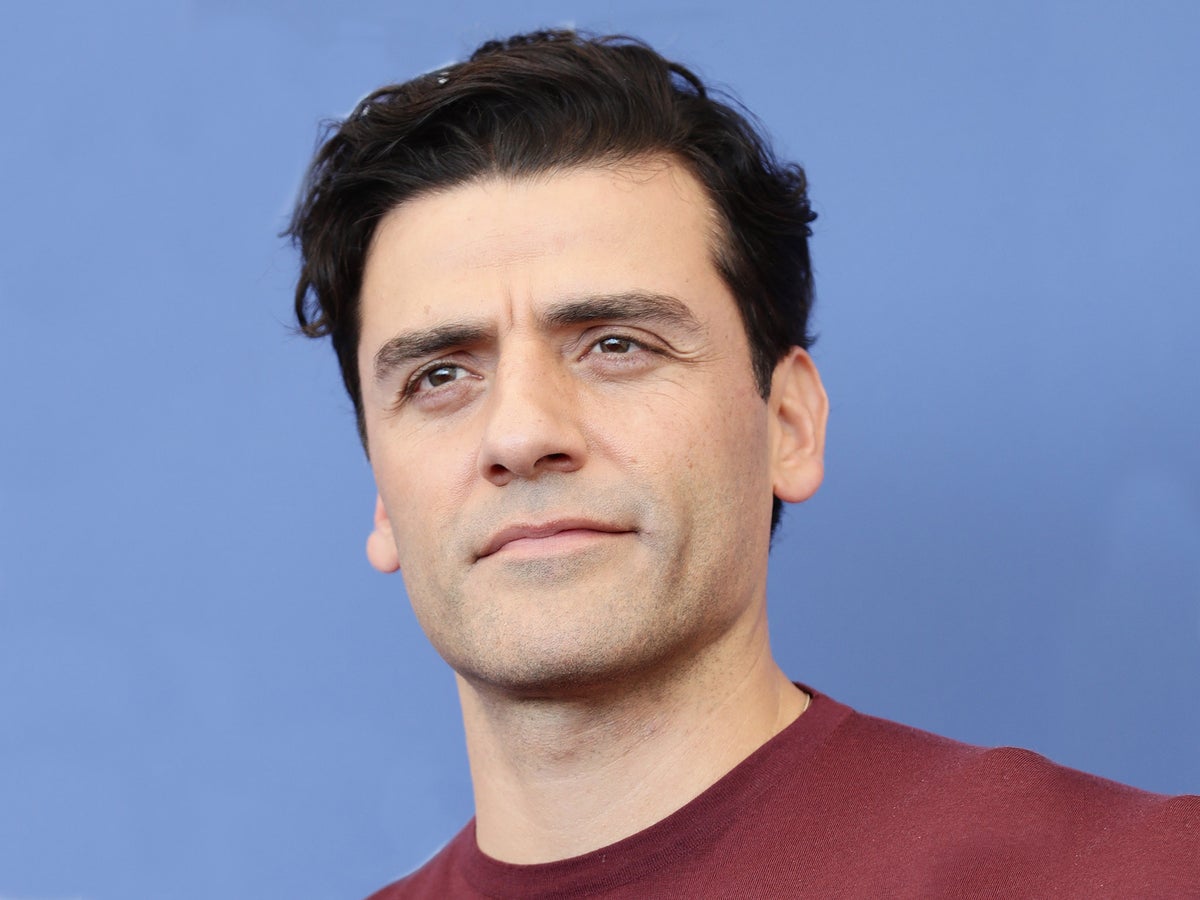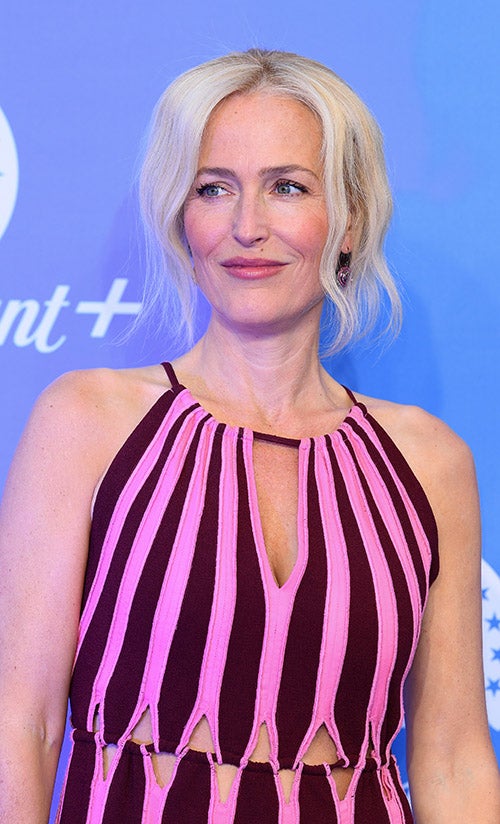
Oh Twitter, what will we do if you die? Without you, how will we learn that Gillian Anderson and Andie MacDowell are now regarded as “non-conventional” beauties? Or that a handful of people think their weirdest and most absurd crush is Oscar Isaac? Or even – according to a viral Twitter prompt last week that asked for the names of “every non-conventional person that makes y’all horny” – that Sophie Okonedo, Rami Malek, Zosia Mamet and Jeremy Allen White are all freaky looking guilty pleasures? And yes, that is the Jeremy Allen White who recently got hearts fluttering as a tormented culinary genius in the kitchen-based TV drama The Bear. A man who some might think is a resolutely conventional choice for internet infatuation. If by “conventional” we mean “in accordance with what is generally done”, or, to put it more simply, “on trend”. But no! Apparently we are instead in the business of stretching what is meant by “non-conventional” beyond all normal limits.
A similar situation is ongoing regarding the lothario of the moment, Saturday Night Live alumnus Pete Davidson. Each time he is seen out and about with another celebrity hot girl – his previous have included Kate Beckinsale, Ariana Grande and Kim Kardashian – the internet goes into paroxysms of confusion and horror. “How could a man that looks like that snag a girl that looks like that,” people cry – all while seeming to forget that Davidson is really tall, extremely rich, covered in tattoos and a comedian. As one online sage put it in a defence of Davidson’s steady acquisition of baddies: “Imagine laughing a lot. In a penthouse. Congratulations, you’re in love.” Yet, despite his obvious charms, Davidson is thought of as a “quirky” romantic choice; another “non-conventional” hottie. The whole thing feels a little like a Schrodinger-style thought experiment, with celebrities able to be both hot and not-hot at the same time.
So, what’s going on here? Does the fact people are “confessing” to fancying “non-conventional” celebs suggest our perceptions of beauty are widening? Or, in fact, does it suggest the precise opposite? Does the very idea that there is a realm of “non-conventional” beauty only reinforce the parameters of what “conventional” beauty is thought to be? What does it really mean for both Cate Blanchett and Lupita Nyong’o to be deemed “non-conventional” looking?
Well, there are quite a few things at play here. Firstly, a truism that has, in the social media age, become something of a memed cliche: a lot of people like weird little guys. You know what I mean – the stereotypical freaks and geeks that get pushed around in lunch queues by the jocks, but often get the girl in the end. Or the sensitive and smart boys who might not play Thor but will make you laugh. Clearly, these weird but lovable guys play a major role in celebrity, and make up one subsection of the supposedly “non-conventional” beauty brigade. Across feeds and gossipy headlines, the same bunch of dudes are often grouped together as “unconventional” alternatives to the Hemsworths, Beckhams and Pitts of the world. Basically: David Tennant, Matt Smith, Benedict Cumberbatch and Domnhall Gleeson. Declaring a desire for this specific calibre of “non-conventional” celeb announces nothing more than a desire to be regarded as “unconventional” and “alternative” yourself. By proclaiming to fancy these guys – the not-jocks – what people are actually trying to profess is that they themselves are sensitive, smart and funny, with cultivated tastes. “No muscles for me,” they hint and imply. “I prefer someone ‘quirky’.”
What this belies, though, is that there is nothing “quirky” or subversive about calling a posh, skinny, English geek with a sense of humour attractive. Really, these “non-conventional” hotties are about as conventional as it gets. Indeed, the last few decades have borne witness to the grand, cultural rise of the geek. From superhero and fantasy fandoms to bros who code, nerd culture is no longer the domain of the alternative outsiders, but is decidedly mainstream. Geeky, weird “non-conventional” guys are everywhere, being adored and admired. This is why I personally welcome the cultural return of the Jack Grealish-esque fun-but-dumb himbo – there are far too many strange but smart loners play-acting as child-kings in the upper echelons of politics and Silicon Valley for my tastes.
Yet, the story doesn’t end here. There is a lot more at work in contemporary understandings of “non-conventional” beauty than just a clutch of skinny white guys getting people hot and bothered. What is more insidious is the fact that, on most of the Twitter threads and listicles of “non-conventional” looking stars, a vast swathe are either people of colour, or Jewish, or over 40, or all of the above. Far from attesting to a diverse, inclusive understanding of attractability, what this seems to suggest is a tightening of racist, ageist beauty ideals.
James Fox, head of data and analytics at Canvas8, suggests “our understanding of beauty has definitely shifted since the rise of social media”. But she also stresses that “the idea of beauty itself is problematic”. Fox references sociologist Tressie McMillan Cottom’s book of essays, Thick, quoting Cottom’s declaration that “beauty isn’t actually what you look like; beauty is the preferences that reproduce the existing social order”.
“If we are positioning someone as unconventionally beautiful,” Fox says, “we must ask ourselves how we define ‘conventional’ and where that comes from.” So, if anyone who isn’t skinny, white and perpetually 22 can be deemed “non-conventional”, then “conventional” beauty presumably means looking like, in the words of Taylor Swift, a “sexy baby”.
To some extent, this has always been the case – the two pillars of youth and whiteness have held up the beauty industry for as long as it’s existed. Yet, the particular contours of today’s “sexy baby” aesthetic also come, in large part, from Instagram, and all the visual tricks and trends it encourages. “Socialising online with filtered images has unfortunately warped our idea of beauty,” cosmetic surgeon Dr Paul Banwell suggests. “With the rise of filters and editing apps we’re almost forgetting what ‘normal’ beauty looks like. We’re celebrating a beauty that takes away any flaws, [and] removes any pores in our skin.”
In 2019, Jia Tolentino wrote about the rise of this kind of filtered, poreless beauty in the New Yorker, describing “the gradual emergence, among professionally beautiful women, of a single, cyborgian face” – “a young face … with poreless skin and plump, high cheekbones. It has catlike eyes and long, cartoonish lashes; it has a small, neat nose and full, lush lips.” The face, Tolentino continued, “is distinctly white but ambiguously ethnic”, and has since become known as “Instagram Face”. It is this cartoonish, catlike visage that is worn by Bella Hadid, Emily Ratajowksi and both Jenners, and it is what has come to define “conventional” beauty in 2022.

Convention dictates behaviour, and many people are now seeking to give themselves “sexy baby Instagram Face” by whatever means necessary. “Whereas once upon a time patients would have come to see me with a celebrity’s lips or breasts and ask me to emulate [them],” Dr Banwell says, “patients now come to see me with a picture of themselves – but with a Snapchat filter.” Consultant oculoplastic and ophthalmic surgeon Dr Elizabeth Hawkes has also witnessed a boom in Instagram-inspired surgery. “I have seen a rise in enquiries for both aesthetic and surgical procedures around the eyes,” Dr Hawkes says, noting “the ‘fox eye’ lift is a good example of this.” Supposedly inspired by Bella Hadid and Kendall Jenner and perpetuated on social media through “fox eye” filters, this non-surgical “tweakment”, as Dr Hawkes puts it, “involves plastic threads being inserted into the side of the eyes to stretch the skin”.
One problem, of course, is that no surgical or nonsurgical “tweakment” can truly achieve the most conventionally desirable face – because it isn’t real to start with. It’s merely formed from a complex of digital renderings, artifice, and classic cultural appropriation. Which is the second major problem. Despite promoting an “ambiguously ethnic” look, what this aesthetic actually does is uphold a system that privileges whiteness, while pushing others out to the margins. Jennifer Nguyen is an MA fashion graduate with a research specialism in colourism. She questions how much the contemporary beauty ideal has “strayed from a beauty standard rooted in whiteness”. “Society now deems [ethnic features] as part of the beauty standard,” she says, “but conditionally – as a racialized person, one mustn’t stray too far from white attributes to be deemed as beautiful”.
With Instagram Face continuing to hold sway online and in cosmetic surgeons’ offices, pushing back against “conventional” beauty ideals is of utmost importance. But this cannot be done by positioning everyone who doesn’t have an Instagram Face as “alternative”. Because, at the end of the day, if Oscar Isaac is a “non-conventional” hottie, god help the rest of us.







